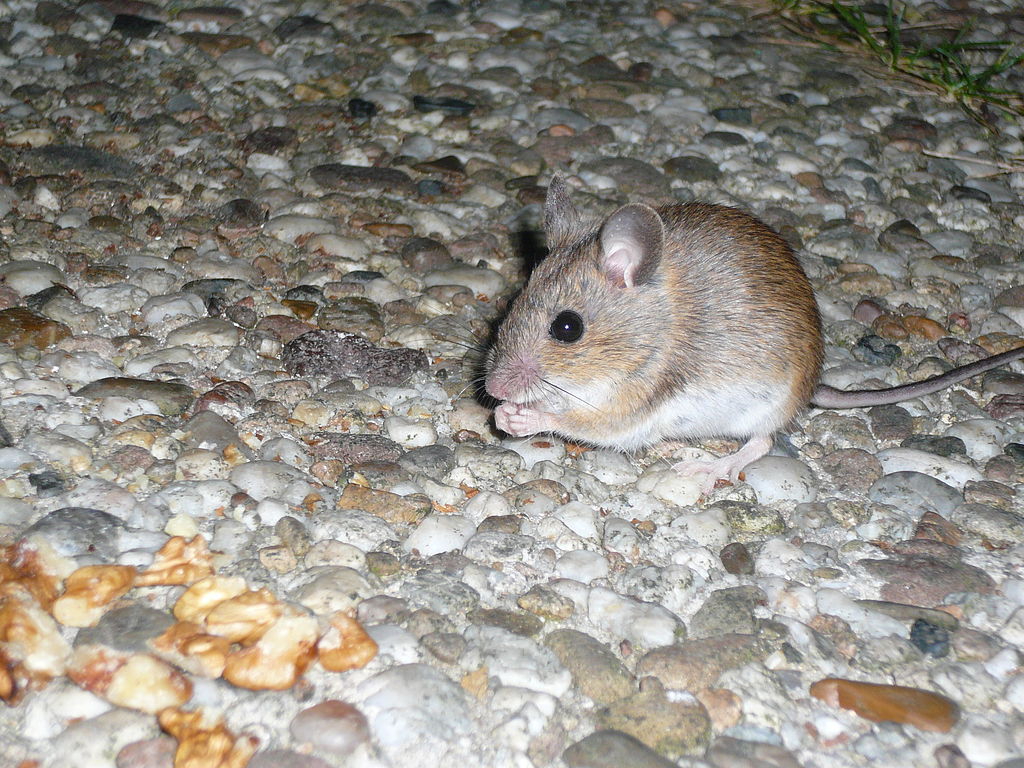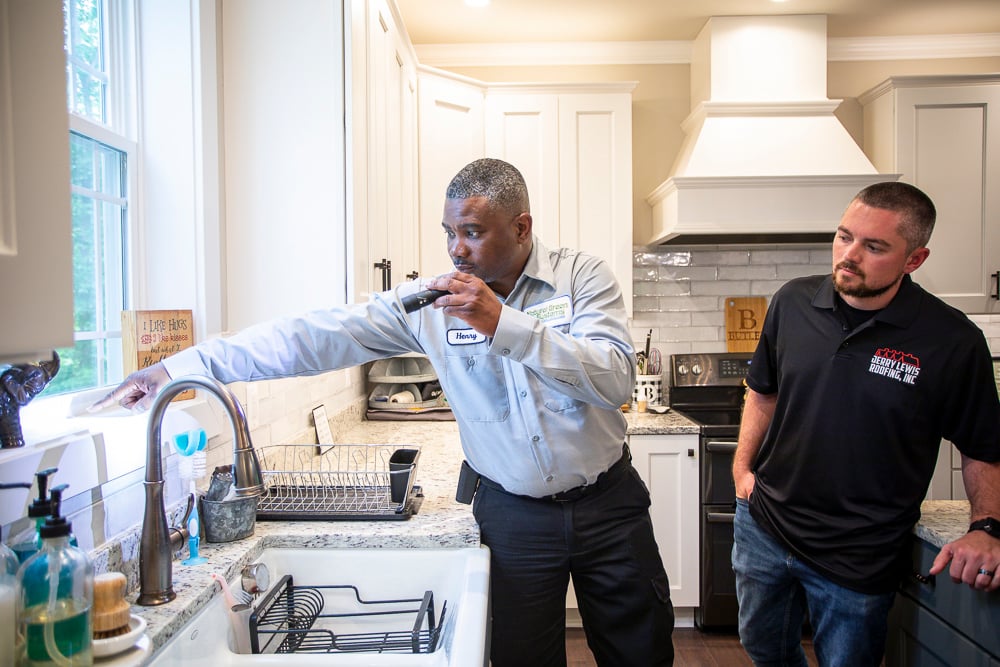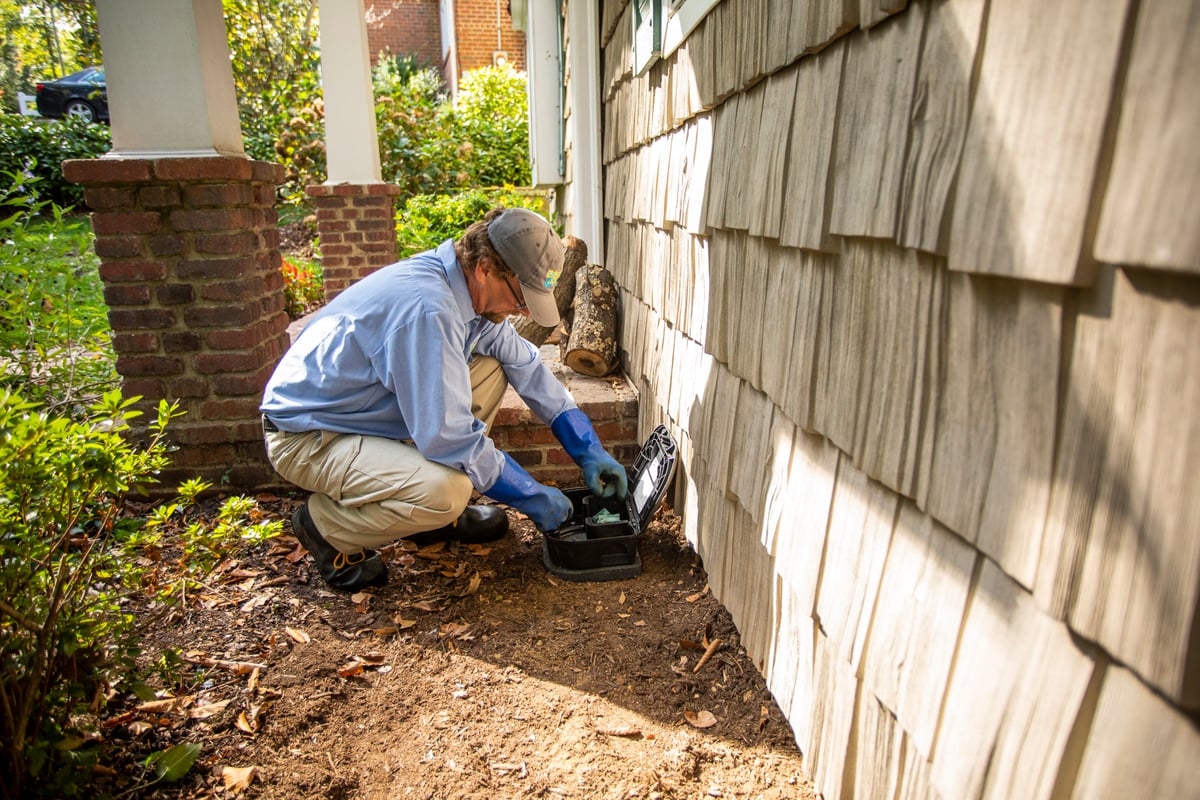5 Signs of a Mouse or Rat Problem in Your House
Unfortunately, mice and rats living in your home can go undetected for quite some time. It’s no wonder: They are quiet and small and can sneak into the smallest of spaces.
All they need are bits of food and drops of water. Even the cleanest of houses may have a crumb here or there in hard-to-reach spots. Mice also aren’t picky about what they use to make their nests; any scraps will do.
But if you look carefully, there are usually some clear signs of mice or rats in your house you can spot to help you better identify if you have a problem in your Maryland home.
Let’s look at the biggest signs of a rodent in your house to help educate you on what to look for.
How to Know If You Have a Rodent Infestation
First of all, let’s talk about what you’re looking for when it comes to signs of mice in your house.
Use This Pest Guide to Identify & Eliminate 28 Different Pests!
Mice are usually light brown or gray with whitish bellies, ranging in size from 2.5 to 4 inches long. They have large, round ears, and their tails grow to the same length or even longer than their bodies. Rats, on the other hand, are larger, heavier, and longer than mice.
Here are your top 5 signs of a mouse in your house and signs of a rat in your house that you should keep watch for if you suspect an infestation.
Sign #1: A Messy Home That Attracts Mice
During autumn and winter, mice are seeking warmth and shelter in Maryland as the weather cools down. They want a shielded place to nest and grow their families.
They are also looking for easy food and water.
Your garage, attic, shed, and home can provide them with everything they need.
 If you look around your home and notice you have more crumbs than you’d like on your floors and food regularly left open, this could be a sign of a mouse or rat in your house because you are basically asking them to stop by.
If you look around your home and notice you have more crumbs than you’d like on your floors and food regularly left open, this could be a sign of a mouse or rat in your house because you are basically asking them to stop by.
To combat this, since mice love cereals and grains, as well as pet food and birdseed, you want to store these attractive foods in hard plastic, metal, or glass containers with airtight lids. On top of this, clean crumbs and spills left from cooking, in addition to regularly sweeping and mopping floors and countertops to keep those temptations at bay.
Finally, use caulk or caulk and copper mesh to seal any holes or cracks that provide mice and rats with easy entry to your home or garage. This can help prevent them from coming in at all even when you forget to clean up after crumbs.
Sign #2: Mouse Droppings
We apologize in advance since this one is pretty gross, but very clear signs of mice in your house are the droppings they leave behind.
 Yes, we’re talking about poop, and mice do quite a bit of this. In fact, each mouse can drop up to 75 little small, smooth black pellets with pointed ends daily. And since they don’t clean up after themselves, you can usually spot mouse droppings in places mice frequent, including kitchen cabinets, pantries, attics, crawl spaces, and near air vents or holes in walls.
Yes, we’re talking about poop, and mice do quite a bit of this. In fact, each mouse can drop up to 75 little small, smooth black pellets with pointed ends daily. And since they don’t clean up after themselves, you can usually spot mouse droppings in places mice frequent, including kitchen cabinets, pantries, attics, crawl spaces, and near air vents or holes in walls.
Rat droppings look a little different. They are shiny black and are ½ to ¾ of an inch long.
Sign #3: Mice Sightings or Holes
While mice are usually most active between dawn and dusk, you can spot evidence of their movement any time of the day.
 But if you don’t see an actual mouse, you might see holes or debris they leave behind as they gnaw their way through dark corners in your kitchen cabinets or areas of your pantry.
But if you don’t see an actual mouse, you might see holes or debris they leave behind as they gnaw their way through dark corners in your kitchen cabinets or areas of your pantry.
Sign #4: Messes You Didn’t Make
Another sign of a mouse in your house might be random, strange, small piles of messes that you don’t remember making yourself.
 For instance, you might find little caches of pet food or birdseed behind appliances. You might even find random pieces of paper, cotton balls, and twine in somewhat hidden places.
For instance, you might find little caches of pet food or birdseed behind appliances. You might even find random pieces of paper, cotton balls, and twine in somewhat hidden places.
These signs are all showing you that mice are sneaking food or crumbs and attempting to gather materials for building nests.
Sign #5: Strange Noises
While “quiet as a mouse” is certainly a thing, making mice tough to spot, mice can also be quite noisy when they are moving in numbers and super active.
Mice also gnaw a lot to file down their continuously growing teeth. You might hear them gnawing wood or walls or even electrical wires.
As a sign of mice in your house, you might hear weird noises in your walls or scurrying along floors in the dark.
See a Mouse? Get Them Out of Your House
Mice are pretty gross, right? They sneak in and steal your food, leaving behind messes in their wake.
And once they are inside, all warm and cozy with full bellies, they make more mice. A female mouse can have anywhere from 5 to 12 babies in one litter. And if you let the infestation go, she can have between 5 and 20 litters a year. You can’t imagine how many mice that can bring on relatively quickly.
 On top of that, mice can also be linked to disease, exposing you and your family to more issues.
On top of that, mice can also be linked to disease, exposing you and your family to more issues.
Now that you know the signs of mice in your house, once you identify one or two, you might want to take action – and do it fast.
First, if you find any nests, remove them immediately.
Next, place rodent bait stations or snap or glue traps in your home to eliminate mouse activity. Place them in enclosed spaces, garage corners, and behind appliances – anywhere you’ve noticed activity. Place traps at right angles to walls with bait nearest the wall. Glue traps can be placed in similar locations to snap traps.
This might sound overwhelming. We completely understand. If you are concerned about properly and quickly eliminating all the rodents in your house, you might want to call in some help from a pest control professional.
Looking for mice control in Central or Southern Maryland? Give Natural Green a call. We can confirm the presence of mice in your home. Then, we use bait stations that are pet- and tamper-proof so they are safer for use inside your home. We also help seal cracks and crevices and properly place bait stations and traps, as well as check on them regularly to ensure they are working. We usually conduct monthly visits for three months to eliminate mice, and then provide quarterly inspections to make sure they are gone.
On top of that, we can also offer other pest control services – a single solution to eliminate all of your pest worries. Call us with all of your questions; we’re happy to help give you a pest- and rodent-free home.
Ready to stop the mouse madness in your Central and Southern Maryland home? Request a free quote today. We’ll review our options together so you can make the best choice for you. Then you can sit back and enjoy your home – mouse free!
Image Source: mouse eating
Unfortunately, mice and rats living in your home can go undetected for quite some time. It’s no wonder: They are quiet and small and can sneak into the smallest of spaces.
All they need are bits of food and drops of water. Even the cleanest of houses may have a crumb here or there in hard-to-reach spots. Mice also aren’t picky about what they use to make their nests; any scraps will do.
But if you look carefully, there are usually some clear signs of mice or rats in your house you can spot to help you better identify if you have a problem in your Maryland home.
Let’s look at the biggest signs of a rodent in your house to help educate you on what to look for.
How to Know If You Have a Rodent Infestation
First of all, let’s talk about what you’re looking for when it comes to signs of mice in your house.
Use This Pest Guide to Identify & Eliminate 28 Different Pests!
Mice are usually light brown or gray with whitish bellies, ranging in size from 2.5 to 4 inches long. They have large, round ears, and their tails grow to the same length or even longer than their bodies. Rats, on the other hand, are larger, heavier, and longer than mice.
Here are your top 5 signs of a mouse in your house and signs of a rat in your house that you should keep watch for if you suspect an infestation.
Sign #1: A Messy Home That Attracts Mice
During autumn and winter, mice are seeking warmth and shelter in Maryland as the weather cools down. They want a shielded place to nest and grow their families.
They are also looking for easy food and water.
Your garage, attic, shed, and home can provide them with everything they need.
 If you look around your home and notice you have more crumbs than you’d like on your floors and food regularly left open, this could be a sign of a mouse or rat in your house because you are basically asking them to stop by.
If you look around your home and notice you have more crumbs than you’d like on your floors and food regularly left open, this could be a sign of a mouse or rat in your house because you are basically asking them to stop by.
To combat this, since mice love cereals and grains, as well as pet food and birdseed, you want to store these attractive foods in hard plastic, metal, or glass containers with airtight lids. On top of this, clean crumbs and spills left from cooking, in addition to regularly sweeping and mopping floors and countertops to keep those temptations at bay.
Finally, use caulk or caulk and copper mesh to seal any holes or cracks that provide mice and rats with easy entry to your home or garage. This can help prevent them from coming in at all even when you forget to clean up after crumbs.
Sign #2: Mouse Droppings
We apologize in advance since this one is pretty gross, but very clear signs of mice in your house are the droppings they leave behind.
 Yes, we’re talking about poop, and mice do quite a bit of this. In fact, each mouse can drop up to 75 little small, smooth black pellets with pointed ends daily. And since they don’t clean up after themselves, you can usually spot mouse droppings in places mice frequent, including kitchen cabinets, pantries, attics, crawl spaces, and near air vents or holes in walls.
Yes, we’re talking about poop, and mice do quite a bit of this. In fact, each mouse can drop up to 75 little small, smooth black pellets with pointed ends daily. And since they don’t clean up after themselves, you can usually spot mouse droppings in places mice frequent, including kitchen cabinets, pantries, attics, crawl spaces, and near air vents or holes in walls.
Rat droppings look a little different. They are shiny black and are ½ to ¾ of an inch long.
Sign #3: Mice Sightings or Holes
While mice are usually most active between dawn and dusk, you can spot evidence of their movement any time of the day.
 But if you don’t see an actual mouse, you might see holes or debris they leave behind as they gnaw their way through dark corners in your kitchen cabinets or areas of your pantry.
But if you don’t see an actual mouse, you might see holes or debris they leave behind as they gnaw their way through dark corners in your kitchen cabinets or areas of your pantry.
Sign #4: Messes You Didn’t Make
Another sign of a mouse in your house might be random, strange, small piles of messes that you don’t remember making yourself.
 For instance, you might find little caches of pet food or birdseed behind appliances. You might even find random pieces of paper, cotton balls, and twine in somewhat hidden places.
For instance, you might find little caches of pet food or birdseed behind appliances. You might even find random pieces of paper, cotton balls, and twine in somewhat hidden places.
These signs are all showing you that mice are sneaking food or crumbs and attempting to gather materials for building nests.
Sign #5: Strange Noises
While “quiet as a mouse” is certainly a thing, making mice tough to spot, mice can also be quite noisy when they are moving in numbers and super active.
Mice also gnaw a lot to file down their continuously growing teeth. You might hear them gnawing wood or walls or even electrical wires.
As a sign of mice in your house, you might hear weird noises in your walls or scurrying along floors in the dark.
See a Mouse? Get Them Out of Your House
Mice are pretty gross, right? They sneak in and steal your food, leaving behind messes in their wake.
And once they are inside, all warm and cozy with full bellies, they make more mice. A female mouse can have anywhere from 5 to 12 babies in one litter. And if you let the infestation go, she can have between 5 and 20 litters a year. You can’t imagine how many mice that can bring on relatively quickly.
 On top of that, mice can also be linked to disease, exposing you and your family to more issues.
On top of that, mice can also be linked to disease, exposing you and your family to more issues.
Now that you know the signs of mice in your house, once you identify one or two, you might want to take action – and do it fast.
First, if you find any nests, remove them immediately.
Next, place rodent bait stations or snap or glue traps in your home to eliminate mouse activity. Place them in enclosed spaces, garage corners, and behind appliances – anywhere you’ve noticed activity. Place traps at right angles to walls with bait nearest the wall. Glue traps can be placed in similar locations to snap traps.
This might sound overwhelming. We completely understand. If you are concerned about properly and quickly eliminating all the rodents in your house, you might want to call in some help from a pest control professional.
Looking for mice control in Central or Southern Maryland? Give Natural Green a call. We can confirm the presence of mice in your home. Then, we use bait stations that are pet- and tamper-proof so they are safer for use inside your home. We also help seal cracks and crevices and properly place bait stations and traps, as well as check on them regularly to ensure they are working. We usually conduct monthly visits for three months to eliminate mice, and then provide quarterly inspections to make sure they are gone.
On top of that, we can also offer other pest control services – a single solution to eliminate all of your pest worries. Call us with all of your questions; we’re happy to help give you a pest- and rodent-free home.
Ready to stop the mouse madness in your Central and Southern Maryland home? Request a free quote today. We’ll review our options together so you can make the best choice for you. Then you can sit back and enjoy your home – mouse free!
Image Source: mouse eating
Share This
Topics: Pest Control


